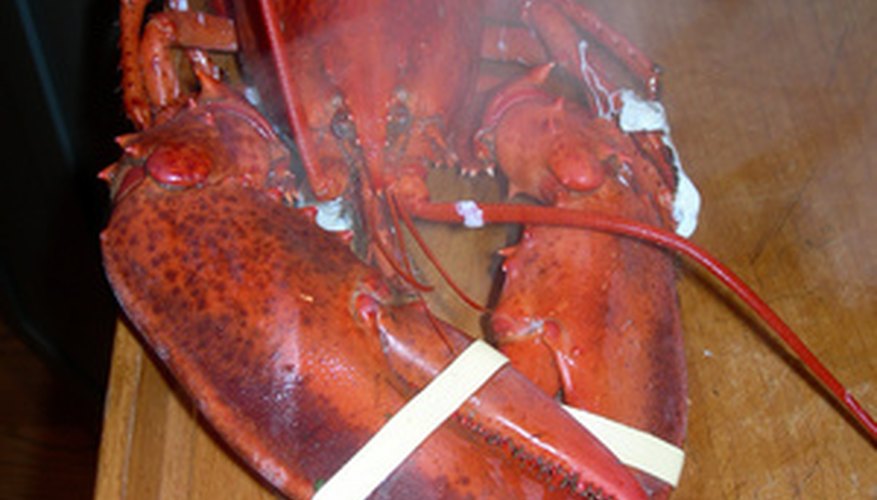You can reheat a lobster inside its shell in just a few minutes on the stove, in the oven, under the grill or on the grill. Reheating previously cooked lobster in the shell can lead to tough rubber meat if not done correctly. Steaming the lobster is the most foolproof option because the water vapour keeps the meat moist as it reaches a safe temperature. Basting and high temperatures will keep a reheated lobster from drying out on the grill or in the oven and grill.
- You can reheat a lobster inside its shell in just a few minutes on the stove, in the oven, under the grill or on the grill.
- Reheating previously cooked lobster in the shell can lead to tough rubber meat if not done correctly.
Thaw cooked, frozen lobsters overnight in the refrigerator in a bowl that allows for drainage. Remove the thawed lobsters from the refrigerator five minutes before cooking.
- Thaw cooked, frozen lobsters overnight in the refrigerator in a bowl that allows for drainage.
Place a steam basket inside a large stockpot and add water until the level nearly reaches the bottom of the basket. Leaving too much water in the stockpot will boil the lower parts of the lobster while the upper parts steam, resulting in an uneven meat texture.
Put the stockpot onto the stove over medium-high heat and cover it with the lid.
Reduce the heat to medium once the water reaches a boil and lower the whole lobster in the shell into the steamer basket before replacing the lid. Adjust the lobster so that it is on its back with its legs facing up. Allow the lobster to steam for five minutes.
- Put the stockpot onto the stove over medium-high heat and cover it with the lid.
- Reduce the heat to medium once the water reaches a boil and lower the whole lobster in the shell into the steamer basket before replacing the lid.
Lift the lid carefully to vent steam away from your hands and face and take an internal temperature reading by inserting a probe thermometer in between the shell and into the lobster meat. Replace the lid and continue steaming for two to three more minutes or until the temperature reaches 82.2 degrees Celsius.
Remove the reheated lobster from the steaming stockpot with a pair of tongs and allow it to rest for two minutes before serving. The meat inside the shell may still be very hot.
Thaw cooked, frozen lobsters overnight in the refrigerator in a bowl that allows for drainage. Remove the thawed lobsters from the refrigerator five minutes before cooking.
- Thaw cooked, frozen lobsters overnight in the refrigerator in a bowl that allows for drainage.
Combine the melted butter and lemon juice in a small bowl and stir them together with a basting brush.
Turn the cooked lobster onto its back and split the section between the small legs by pressing halfway down into the lobster with a sharp chef's knife.
Brush the newly opened cavity with the butter and lemon juice mixture and loosely wrap the lobster in a single sheet of aluminium foil, leaving the basted section exposed.
Place the basted and foil-wrapped lobster into a medium heat grill or broiler, or an oven preheated to 177 degrees Celsius. Make sure that the basted, exposed section of the lobster is facing up and that the lobster is no closer that 4 inches from an open flame.
Check the internal temperature with a probe thermometer when the lobster has been in the heat for five minutes. Continue baking, broiling or grilling until the temperature reading in the thickest part of the lobster is 82.2 degrees Celsius.
Remove the lobster from the heat with a pair of tongs and allow it to rest for at least two minutes before serving. The meat inside the shell may still be very hot.
WARNING
Reheating cooked lobster in the shell using a microwave may lead to messy explosions and food loss.
